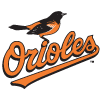This article is part of our Pitching 3D series.
This is why I always like to take a snapshot of player value at the close of a season, when that end-of-season evaluation is fresh in our minds. There are a number of pitchers whose in-season patterns from this year should have an impact at the draft table for 2017 or whose splits might reveal their optimal deployment next season, and this is our opportunity to vet those arms.
One need look no further than Jordan Zimmermann to see how opinions change on a player throughout the course of the season. Coming off a 2015 campaign that was his most difficult as a pro and making the transition to the American League contributed to the fall of Zimmermann's perceived value during draft season this year, but a 0.55 ERA in April (5-0 record, 33.0 innings pitched) had the fantasy community jumping back on the
This is why I always like to take a snapshot of player value at the close of a season, when that end-of-season evaluation is fresh in our minds. There are a number of pitchers whose in-season patterns from this year should have an impact at the draft table for 2017 or whose splits might reveal their optimal deployment next season, and this is our opportunity to vet those arms.
One need look no further than Jordan Zimmermann to see how opinions change on a player throughout the course of the season. Coming off a 2015 campaign that was his most difficult as a pro and making the transition to the American League contributed to the fall of Zimmermann's perceived value during draft season this year, but a 0.55 ERA in April (5-0 record, 33.0 innings pitched) had the fantasy community jumping back on the bandwagon. But the right-hander was tagged for a 6.98 ERA the rest of the way and has become a shell of his former self, with a composite ERA of 4.88 for the season that will drag down his perceived value next draft season. Zimmermann has earned this fate; I've been an advocate for him as recently as six months ago, but his fall was so precipitous that I will need to see him reestablish the old levels of production before I invest any resources in acquiring his services for 2017.
Zimmermann is an extreme example, one that has been complicated by injury that makes it easier to avoid the right-hander on draft day, but there are other players whose ebb and flow of the 2016 season might just reveal something about their expected value in 2017. Let's take a look at a handful of pitchers whose numbers morph when put under a different microscope.
Rick Porcello (RHP)
Porcello has been the poster boy for unrealized expectations for most of his career, as he was rushed to the big leagues and had to do his learning on the job at the highest level, such that his young age and ever-growing experience fueled optimism for the ground ball specialist. Those hopes didn't materialize for the first seven years of his career. It looked like a massive overpay when the Red Sox signed Porcello to a four-year, $82.5 million extension in April 2015, and though he put the CD on repeat for his performance that season, he has really come into his own this season. He started the year on a good note, but over the last couple of months Porcello has become a force to be reckoned with.
| IP | K | BB | H | HR | WHIP | ERA | |
| 1st Half | 113.0 | 97 | 21 | 111 | 14 | 1.17 | 3.66 |
| 2nd Half | 104.0 | 86 | 9 | 74 | 8 | 0.80 | 2.51 |
Interestingly, Porcello was capped at no more than seven innings in any of his first 20 starts this season, but he tossed a complete game against the Angels on July 29 and since that date, the seven-inning threshold has been a floor rather than a ceiling, and he's pitched into the eighth inning six times in his last 11 starts. His pitch counts have grown slightly during that stretch, averaging 105.98 pitches per start over his last dozen turns after averaging 101.8 pitches over his first 20 starts, but the key has been pitch count efficiency, from 3.91 pitches per batter in the first 20 starts to 3.73 pitches per batter over his last dozen games. That might not sound like much, but consider that the 3.73 pitches per batter would rank is the 15th-lowest rate in the AL this season among 63 qualifiers, but the 3.91 mark would register 47th on the same 63-pitcher scale.
Jon Gray (RHP)
Entering the 2016 season, the conventional wisdom was that Gray would be virtually unstartable for half of his ballgames due to his high-altitude home, but that he could be a potential monster on the road. This made him dangerous to own in leagues with weekly transactions, but he was a somewhat polarizing figures when it came to daily leagues and DFS play. Sure enough, his numbers have featured a noticeable home/road split this season, but not in the direction that most would expect.
| IP | K | BB | H | HR | WHIP | ERA | |
| Home | 83.2 | 94 | 18 | 76 | 9 | 1.12 | 4.30 |
| Away | 79.0 | 88 | 38 | 69 | 9 | 1.35 | 4.78 |
The results this season have led to many mistakes by fantasy owners, either missing high-altitude gems or acquiring lumps when rostering Gray on the road, and it will be interesting to see how various projection systems take this into account. Gray is a young pitcher with a limited sample overall, and each system could spit out wildly different results based on how they treat home/road splits in general, the Coors Field effect specifically, and how Gray has responded to the challenges of pitching at altitude in his one full season in Denver.
Gray can be maddening thanks to his tendency to drift from one extreme to the other in his starts. He has had disaster outings both at home and on the road this season, but he has also flashed dominance at times and teases the ability to be the rare pitcher who can succeed in Coors. From the standpoint of a fantasy manager, Gray's stark performance differences between home and road create a lot of questions as to his ultimate value next season: do we trust physics, gravity and historical records to assume that Gray is not worthy of starting at home, or are last season's metrics enough to roll the dice? Are last season's road struggles an aberration or an illusion of small sample size? The options could leave Gray as a pitcher worth starting regardless of ballpark, a pitcher who is worth avoiding no matter the venue or anything in-between those two extremes.
It was easier prior to the season, when we could all just assume that he would be a struggle when pitching at home but a force to be reckoned with on the road. Instead, Gray has opened Pandora's box.
Kevin Gausman (RHP)
Jon Gray might be confusing the fantasy masses with his home/road trends, but Gausman is the king of unconventional splits, with performance that goes against conventional wisdom on multiple levels. Similar to Gray, it starts at home:
| IP | K | BB | H | HR | WHIP | ERA | |
| 2016 Home | 77.2 | 65 | 17 | 69 | 10 | 1.11 | 2.67 |
| 2016 Away | 94.2 | 106 | 29 | 106 | 17 | 1.43 | 4.47 |
| Career Home | 213.2 | 178 | 50 | 193 | 25 | 1.14 | 3.03 |
| Career Away | 232.0 | 233 | 76 | 253 | 34 | 1.42 | 4.89 |
The home/road split is not the only area of intrigue with Gausman. He also defies convention when it comes to platoon splits, something that is characteristic of several of Baltimore's big hitters - Manny Machado and Adam Jones come readily to mind - but Gausman's reverse platoon split is fairly unique among the regular starters on the Orioles' staff (spot-starter Tyler Wilson has also shown a reverse split this season), an attribute that might come in handy among a rotation of pitchers who are all right-handed.
| PA | K | BB | AVG | OBP | SLG | |
| 2016 vs. LHB | 323 | 81 | 17 | .228 | .270 | .383 |
| 2016 vs. RHB | 404 | 90 | 29 | .290 | .347 | .473 |
| Career vs. LHB | 958 | 190 | 71 | .239 | .295 | .386 |
| Career vs. RHB | 916 | 221 | 55 | .281 | .328 | .460 |









